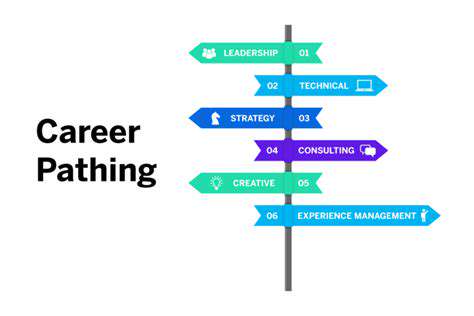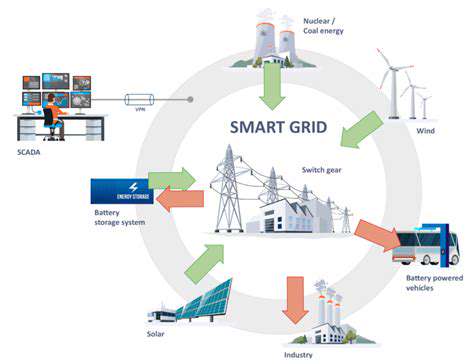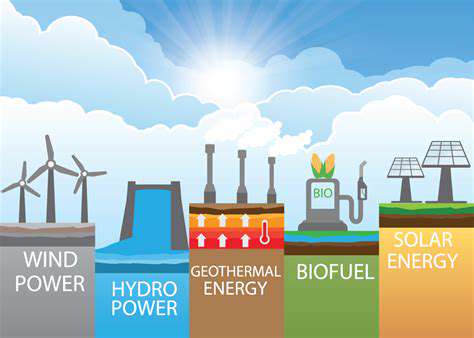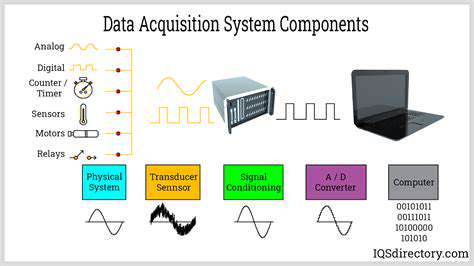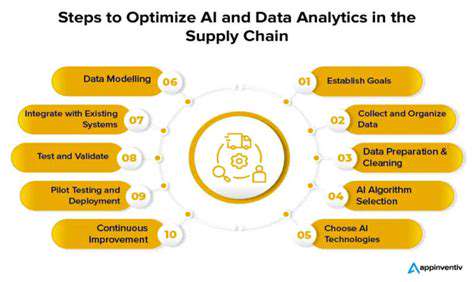Fusion Energy and its Potential Complementary Role to Renewable Energy
Harnessing Fusion's Potential
Fusion energy represents a fundamental shift in energy production paradigms. Unlike chemical or fission processes, it taps into the universe's primary energy mechanism - the same process that has powered stars for billions of years. Recent breakthroughs in plasma containment and heating techniques suggest we may be approaching critical thresholds for practical implementation.
The environmental advantages are particularly compelling when compared to conventional alternatives. No greenhouse gas emissions, no risk of meltdown scenarios, and fuel requirements measured in grams rather than tons. These characteristics position fusion as potentially the cleanest large-scale energy source humanity has ever developed.
Addressing Intermittency Challenges
Renewable energy's Achilles' heel remains its variable output - sunny days produce solar surges while calm periods create generation gaps. Current battery technology struggles to bridge these gaps at grid scale, especially for prolonged periods. This intermittency forces reliance on fossil fuel backups that undermine decarbonization efforts.
Seasonal variations present additional complications - winter solar production drops just as heating demands increase. Similarly, extended wind droughts can last days or weeks across large regions. These fundamental limitations require solutions beyond incremental improvements in storage technology.
Fusion as a Stabilizing Force
Fusion's continuous operation capability solves the intermittency dilemma at its root. Plants could maintain steady output regardless of weather or time of day, providing the reliable backbone that renewable-heavy grids require. This transforms renewables from primary sources to complementary contributors within a stable energy framework.
The operational flexibility proves equally valuable. Fusion plants could theoretically adjust output to match demand fluctuations, something traditional baseload plants struggle with. This dynamic response capability would maximize overall system efficiency while maintaining grid stability.
Technological Advancements in Fusion
Recent years have seen remarkable progress across multiple fusion approaches. High-temperature superconductors enable more compact and powerful magnets, while advanced materials improve plasma containment duration. Private sector involvement has accelerated innovation, with multiple companies now demonstrating net energy gain in prototype systems.
Alternative confinement methods like inertial fusion and magnetized target fusion provide additional pathways to commercialization. These approaches may offer advantages in scalability and cost reduction compared to traditional tokamak designs. The diversity of technical approaches increases the likelihood of at least one achieving commercial viability.
Economic and Societal Implications
Successful fusion deployment would trigger one of history's greatest economic transformations. Energy-intensive industries could relocate based on fusion plant locations, while new manufacturing sectors would emerge to support the technology. The geopolitical implications are equally profound, potentially reducing energy-related conflicts and dependencies.
Developing nations could leapfrog fossil fuel infrastructure entirely, accessing clean energy without the environmental costs paid by industrialized nations. This represents one of fusion's most transformative potentials - enabling global development without ecological destruction.
The Path Forward: Collaboration and Innovation
Realizing fusion's promise requires sustained commitment across multiple fronts. Public funding must support basic research while private investment commercializes promising approaches. International cooperation remains essential, as demonstrated by the ITER project's multinational consortium.
Regulatory frameworks must evolve in parallel with technological progress to ensure safety without stifling innovation. Workforce development programs will be needed to train specialists across multiple disciplines. This comprehensive approach maximizes our chances of ushering in the fusion era within meaningful timelines.

The Path Forward: Collaboration and Innovation
Harnessing the Power of Fusion
Fusion energy stands as humanity's most promising solution to the energy-climate nexus. The science is sound - we know fusion works at stellar scales - but mastering it terrestrially pushes engineering to its limits. The rewards justify the effort: one kilogram of fusion fuel could theoretically replace 10 million kilograms of fossil fuels.
Recent achievements in plasma confinement duration and energy output suggest we're approaching critical thresholds. Private sector milestones now complement government-funded research, creating multiple paths to commercialization. This diversified approach increases our chances of success while accelerating overall progress.
The Role of International Collaboration
No single nation can monopolize fusion development - the challenges are too great and the benefits too universal. The ITER project exemplifies this cooperative spirit, combining resources from 35 nations. Such collaboration distributes costs while pooling global scientific expertise, creating synergies impossible for individual countries to achieve.
Knowledge-sharing agreements between public and private entities further accelerate progress. Open-access research databases allow scientists worldwide to build on each other's findings. This collective approach mirrors the technology itself - where the whole becomes greater than the sum of its parts.
Innovative Materials and Technologies
Fusion's extreme operating conditions demand materials that don't yet exist commercially. Tungsten alloys must withstand neutron fluxes that would vaporize conventional metals. These material challenges have already spurred innovations with applications in aerospace, medicine, and advanced manufacturing.
Superconducting magnet technology has seen particular advancement, with new compounds operating at higher temperatures and magnetic fields. These developments benefit not just fusion but also medical imaging, particle physics, and energy transmission.
Addressing Safety and Environmental Concerns
While inherently safer than fission, fusion still requires rigorous safety protocols. Tritium handling demands containment measures, while neutron activation of reactor components creates waste management considerations. These challenges are orders of magnitude smaller than fossil fuel impacts or nuclear waste concerns, but still require thoughtful solutions.
Regulatory frameworks must balance precaution with progress, ensuring safety without imposing unrealistic barriers. Proactive engagement with communities and transparent risk communication will be essential for public acceptance.
Economic Implications and Potential
The fusion industry could become one of the 21st century's largest economic sectors. From construction to operation to ancillary technologies, the value chain will span multiple industries. Energy-abundant economies could see productivity surges comparable to the Industrial Revolution.
Developing nations stand to benefit disproportionately, gaining access to cheap, clean power without fossil fuel infrastructure. This could help bridge global inequality while addressing climate change - a rare win-win scenario.
The Future of Energy Production
Fusion's ultimate promise lies in its scalability and sustainability. Once proven, plants could be constructed worldwide using locally available fuel. This decentralization potential could democratize energy access like never before.
The technology's maturity timeline aligns with critical climate deadlines, offering hope for meaningful emissions reductions. While challenges remain, the pieces are falling into place for fusion to transform our energy landscape within our lifetimes.

